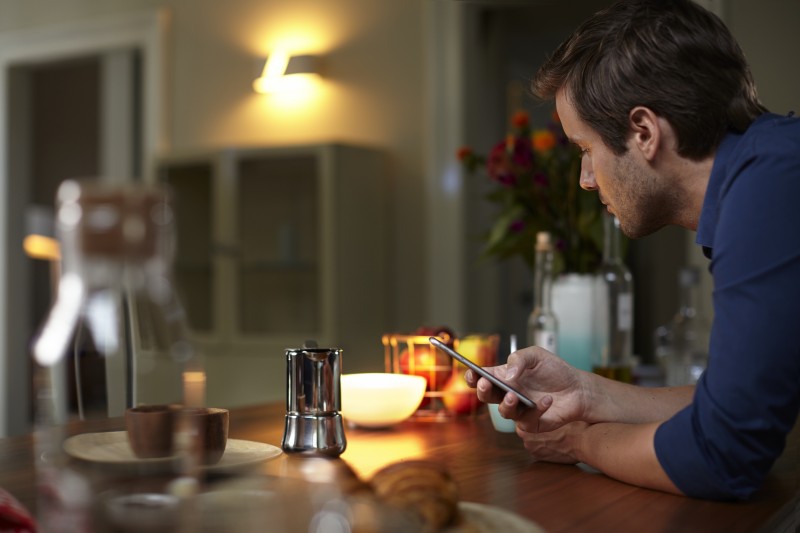In the last few years, the idea of a smart home has become less a lofty sci-fi idea and more an accessible reality. Speakers that control your lightbulbs and front doors, cameras that notify your phone of any movement when you’re not home, and many more of such tech products are becoming mainstream.
But starting your own smart home can feel like an overwhelming project that you’d never finish. We asked experts in the world of smart home tech for the best tips to kickstart the process at your house—sans headache.

Pick a Room
Don’t try to deck out your entire home with smart tech at the same time. Focus on one room to start in, recommend Sumang Liu and John Torres of Mosaic, a startup making smart homes easy to control through text or voice. “Pick a place that you spend most of your time and build from there,” says Torres. “Start with lights, or a switch, even if it’s just turning on a lamp in the corner or turning on your TV. Then you can build your experience up from there and gauge how you like it.”

Room Inspiration
Spend a lot of time in the living room? An easy way to start could be a smart speaker, like Amazon Echo or Google Home, to listen to music or hear the daily news.
Looking to enhance your bedroom? Smart light bulbs like Philips Hue or LIFX can easily be programmed to help you fall asleep with warm lighting and wake you up naturally with brighter lights.

Solve a Problem
The best way to start a smart home that really benefits you? NXP, a provider of semicondutor solutions for smart homes, recommends choosing a problem to solve. “The best place to start is by asking yourself, which experiences and functions in your house can be improved if they had automation?” said Director Leonardo Azevedo. “Perhaps a person decides automatic lights and door locks is something they want to move forward with.”
In the same vein, think about something that would really make an impact on your daily life. Carley Knobloch, a digital lifestyle expert, tackled an unexpected issue with her smart garage door opener: “My kids use it as their keyless entry—I can remotely open it for my daughter or my son can open it himself. I can get an alert that my daughter is in the front yard, and get an alert if she leaves the garage door open. Problems I didn’t know I had, it solves for me.”

Smart Solutions
Worried about your pet when you’re away from home? Home security cameras like the Nest Cam and Canary keep an eye on any movement in or out of the house.
Notorious for losing your house keys in your bag, or don’t have a set for the kids? Install the August Smart Lock to easily unlock your front door from your smartphone, or add a smart garage door opener like the MyQ from Chamberlain.
Is your energy bill getting too high? Add a smart plug like the Belkin WeMo Mini Smart Plug to switch it off after you’ve already headed to the office, or a Nest Learning Thermostat to use your heat and A/C efficiently.

Pick a Product
If there’s something you’re excited about using, pick that product and build from there. Don’t just buy a product because you’ve heard about it, but rather something that you’re really motivated to use.
If you’re limited to one thing, Mosaic recommends going with a smart speaker. “Start with a voice platform and try it out,” says Torres. “That way you don’t have to spend money on other devices, and you get a sense of how to interact with it.”
Choosing that product will also determine the ecosystem that controls your entire smart home. NXP’s Azevedo suggests, “Choose a preferred ecosystem of devices like Apple’s Home Kit or a hands-free controlled device compatible with Amazon Echo. Because one smart device may not necessarily work with the other, choosing a system or ecosystem you’re comfortable with is key to ease installation and compatibility for the rest of your devices.”

Starter Pack
Looking for somewhere easy to start? These products are some of the best to kick off your smart home:
Amazon Echo or Google Home
Philips Hue lightbulbs
Nest thermostat
Nest or Canary security cameras
Amazon and Nest in particular are compatible with a wide range of other smart home products, and those products are often marked with “Works with Nest” or “Works with Amazon Alexa.” Philips Hue works not only with other products, but often with other smart lightbulbs.
Plus, they all come with simple installation instructions. What’s not to love?











